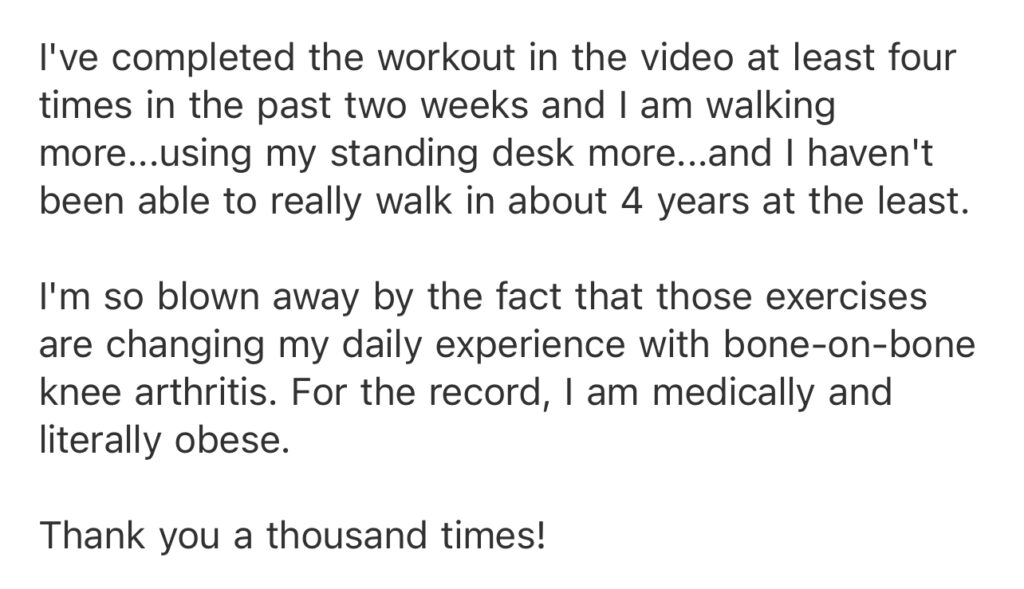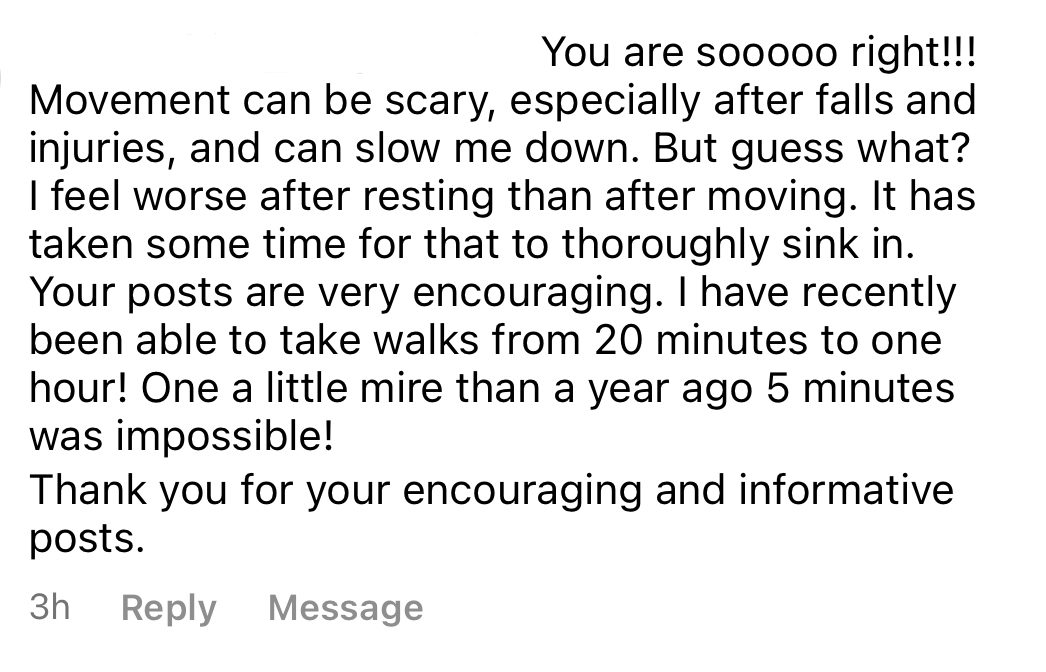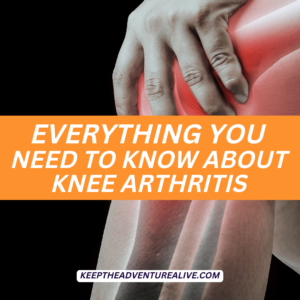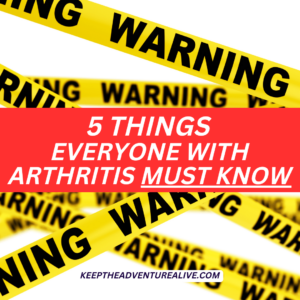The answer is no, exercise doesn’t make osteoarthritis worse. It can actually be pain relieving when done right. A common misconception about osteoarthritis is that it is caused by “wear and tear” and thus, people significantly reduce physical activity levels. But, rest may be causing more harm than good. Research has shown that moderate loading of cartilage (or exercise) is necessary to maintain its health and prevent further harm. If you are not loading your joint, i.e if you have decreased your activity levels, processes that favor cartilage break down then begin. Exercise helps to keep your cartilage from further break down. The right amount and type of exercise is important though.
was just talking with a client about this yesterday. She had mentioned that she had given up exercise the past two years and had a common question that she was never able to get answered: Does exercise make osteoarthritis worse?
Without an answer, she had just given up on exercise.
I find this belief SO common in people that have arthritis. Many people are scared to exercise because of fear of causing more “damage” in their joint. I mean it makes sense right, if you don’t have any cartilage, the less you move, the more you will “save” your joint?
WRONG! This is one of the BIGGEST myths about osteoarthritis and I am going to explain why.


Does exercise make osteoarthritis worse?
Osteoarthritis typically involves your cartilage which acts like a cushion in between your joints. It helps to absorb stress to prevent too much from going to your joint.
When you are diagnosed with osteoarthritis, there are likely lots of thoughts and pictures going through your mind about what is actually happening inside your joint.
You may be told that your cartilage is “wearing away” or is “deteriorating”. You may also hear that “you have not cartilage left” and/or that you are bone on bone. These things can be scary to hear!
With all of these misconceptions about cartilage, no wonder why you are left wondering if exercise makes osteoarthritis worse!
Think of your cartilage in your joint, just like your muscles. If you don’t use your muscles, they will likely lose strength just like the adage “use it or lose it”. Same thing applies to your cartilage. How do you use your cartilage? By standing up and moving! Your cartilage works best under pressure but it has to be the right pressure.
When you don’t challenge your cartilage, for example if you are sedentary or spend a majority of our time sitting or laying down, this can cause problems. The cartilage you do have then gets weaker which can cause more irritation to surrounding structures, hence more pain.
Exercise doesn’t inherently make osteoarthritis worse. Your body is meant to move. But one of the biggest mistakes I see people making is that they are avoiding exercise and limiting movement because they don’t know if they are helping or further harming their joint….

And yes, even with bone on bone arthritis, exercise can be really powerful!
Is exercise helpful if you have osteoarthritis?
One of the most common questions I see from people who are newly diagnosed with osteoarthritis is “Does exercise make osteoarthritis worse?”. Let’s dive into the reasoning as to why the answer is no!
Exercise improves blood flow to your cartilage, joints, and muscles. This helps to clear out some of the inflammatory cells that are irritating your cartilage and bring in new, healthy cells.
When you exercise, you are doing wonderful things for your blood. So what does your blood have to do with your cartilage?
According to the research, exercise helps your blood flow more freely. This is important because this is how your red blood cells transport oxygen and other vital minerals to our muscles, organs, and joints.
If your blood becomes thick and sludgy with higher cholesterol and other effects of a sedentary lifestyle, it makes it much harder to transport these materials efficiently.
Exercise makes your cartilage stronger. Research shows that exercise has been proven to increase the strength of your cartilage. This is especially helpful when you have lost some of the cartilage due to arthritis. You can actually strengthen what you do have.
Exercise fights inflammation. Osteoarthritis is typically triggered by a low grade chronic inflammation. This means that you have a constant state of inflammation in your body that isn’t meant to be there.
There are many things that can contribute to the accumulation of this inflammation. Obesity, high blood pressure, and inactivity are a few. Research shows that using exercise can create anti-inflammatory effects.
Exercise can decrease the amount of body fat (adipose tissue) which is highly correlated with the level of inflammation in your body. It can also suppress specific cells that are responsible for creating inflammation.
Exercise gets the bad cells out of there. It has been found that moderate intensity exercise activates a process called autophagy. This is a fancy word for a process involving cell recycling.
Essentially when you exercise, it activates recycling cells in your muscle to get rid of the inflammatory cells and bring in new healthy cells. This is much like a garbage truck that comes in and picks up the garbage to take it out.
Without this process, you continue to collect these “garbage cells” which can lead to more irritation and higher pain levels.
Exercise builds muscle strength to support your joint. Your joint isn’t meant to do all of the work. It needs support from your muscles to decrease the irritation and pain.
If you were asked to do the job of three of your co-workers combined, you probably would be irritated too! There have been multiple studies that show if you increase muscular strength around an arthritic joint, there are significant decrease in joint pain and improvements in mobility.
For the knees and hips specifically…squats are not bad for joints (when done correctly!) I teamed up with Tommy, CEO of Vekhayn to help explain the misconceptions around squats and considerations you need in order to do them correctly!
The best thing to do is improve the way your joints are aligned by improving strength and fixing some asymmetries you may have!
This is especially important if you notice more pain on one side than the other or one side feels weaker than the other. Both of these situations make you more susceptible to pain and injury. Read the full post here.
Exercise is one way to continue to challenge and strengthen your muscles and cartilage, both vital for joint health.
You do need to make sure it is the right exercise though. If you are challenging it too much with lots of high impact activities or overloading it with too much volume, without your joints being ready for it, it can also start to break down. Learning how to exercise the right way though, can bring you life changing osteoarthritis pain relief.
Exercises that may make osteoarthritis worse
There are certain movements that can actually lead to more osteoarthritis pain but it’s not as black and white as you may think.
Exercises that make osteoarthritis worse are those that make your joint mad. Those movements that drive up your pain or send you into a flare up. The hard part is, there is not an explicit list of things you should avoid even though the internet wants you to believe you shouldn’t ever do squats (learn how to do squats here), lunges, etc. This is simply not true.
Think about it, is there anything you do that tends to make your pain worse? Whether it’s squats, stairs, walking for longer distances, etc. it is important to take note of these and then learn to get better at them!
Lots of times movements can cause pain if there is underlying muscle weakness, poor movement patterns, or simply too much of that movement. Overdoing certain movements can increase pain as well. These factors are important to consider before demonizing exercise.
There is no one movement that you aren’t able to do with osteoarthritis. Heck, you can even run and jump with osteoarthritis once your joints are prepared. The key is in the preparation.
Yes, certain movements may hurt now but it is possible to be able to squat, lunge, walk, and do all kinds of movements even with osteoarthritis. You just have to make sure your joints are ready for them.
If you’re joints aren’t prepared for these movements and you continue to push through the significant pain, you may be making your osteoarthritis pain and symptoms worse. So how do you know what pains to push through and when to stop and modify? Check out this video below:
There aren’t any specific exercises that make osteoarthritis worse. It is simply those that flare up your pain significantly. You have to work to prepare your joints for those movements again.
Squats are a popular one. One woman I was recently seeing with knee osteoarthritis dreaded squats because they always caused her pain. But after just a few simple modifications that prepared her joints to squat- she actually loves them now, even with added weight of a kettlebell! Take a look here.
Here is a post detailing how to start working on squats if that is a difficult movement for you.
Even if you have movements that flare up your pain now, you can absolutely work up to them. There is no one movement that you should totally avoid because you have osteoarthritis.


How to prevent pain with exercise
Gradually increase into whichever activity you choose. If you want to start walking, cycling, hiking, swimming or lifting weights– it is important that you set a plan for yourself. Let’s take walking for example. If you want to start walking for exercise, start with once around the block or 1/2 mile. See how your joints respond.
If there is no significant pain or stiffness immediately after or the next day, you can increase by half of what you walked before. So now you can try 3/4 mile and again see how you respond.
If you notice significant pain (5+/10) or swelling afterwards, you can reduce the distance by half and try again! Don’t give up if this happens! This is just a sign that you’re joint is telling you “I’m not ready for this right now“.
The problem usually occurs when we start out exercising maybe once a month then increase to 4-5 times per week of intense exercise. Too much exercise too quickly can give our joints more than they can handle. This is when people typically give up on exercise because they tried and it caused more pain.
Just remember, no exercise can be equally as harmful.
The best course of action is to find something you like to do or want to try. Gradually work your way into it. Start with 2-3 days per week with 1 rest day in between. Try that consistently for about 1 month, then increase.
Add variety to your exercise routine. Osteoarthritis can exhibit pain when we are loading one part of our joint too much. Take for example, if you have knee pain. You may feel more pain on the inside of your knee compared to the outside. Or the shoulder- you may feel more pain in the front of your shoulder than in the back. This can contribute to cartilage overload in that area.
With this overload, continuous repetitions can potentially lead to more pain.
Variety in your exercise routine.
In order to use exercise to your advantage with osteoarthritis, variety is key. Let’s use walking again for example. If walking is your primary form of exercise, you are working the same muscles over and over again. The fronts of your legs are primarily working to propel you forward.
But what about the backs of your legs, your core, and your arms? These muscles help you do movements other than walking.
Adding in other movements can help with managing osteoarthritis pain and working other parts of your joint.
I always tell people that adding in just a few simple exercises before or after your routine can make a huge difference! If you need some ideas here are a few quick videos you can watch:
When can exercise be detrimental?
It is worth mentioning, exercise can increase your pain. Like we have talked about above, overactivity is one of the main causes of this. No more thinking “no pain, no gain”. Listen to your body.
If your pain levels are too high and are “pushing through” anyways, you will just continue to irritate our joint and you will have a rough night ahead like we talked about in the video above.
If you are doing lots of running or jumping without previous training, you may be overloading your cartilage. This is not saying you can never do these things again. You have to make sure your joints and muscles are ready to handle that type of activity though.
Making sure your balance, single leg strength, and core are ready to go is very important.
Does walking make osteoarthritis worse?
Walking by itself does not make osteoarthritis worse, which may be a sigh of relief for those of you who love walking. There is one mistake that I commonly see made, though.
Limiting your physical activity to just walking-may actually increase your pain. Or if you have ever wondered why your pain doesn’t seem to get better even though you are walking everyday, this could be why.
So what is this reason? Like I mentioned above, arthritis thrives when we don’t have variety. Adding in variety to our movements helps to disperse the stress to your joint instead of stressing the same part of of the joint over and over again.
This video below helps to explain how exactly to add variety to your walking program!
No. Exercise can make a dramatic impact on our pain when we do the right amount and type of exercise. Remember, gradually start exercise instead of going 0-100. Make sure you are adding variety to your training. Understand your cartilage loves movement but not when it is overloaded. Exercise is so powerful and can help you keep your adventure alive.
If you have osteoarthritis your main priority should be finding movements that don’t flare up your pain, whatever those are for you. I have a youtube video you can start with if you’re not sure how to move without pain! Check it out here.
Looking to get rid of osteoarthritis pain once and for all?
There is hope if you have osteoarthritis and it doesn’t have to be a death sentence to everything you love doing. Join the FREE newsletter below to get arthritis tips and tricks delivered straight to your inbox each week.
Disclaimer: This post is for general informational purposes only. It should not be used to self-diagnose and it is not a substitute for a medical exam, cure, treatment, diagnosis, and prescription or recommendation. It does not create a doctor-patient relationship between Dr. Kuhn and you. You should not make any change in your health regimen or diet before first consulting a physician and obtaining a medical exam, diagnosis, and recommendation. Move Well Age Well, LLC and Dr. Alyssa Kuhn, PT, DPT are not liable or responsible for any advice, course of treatment, diagnosis or any conclusions drawn, services or product you obtain through this post, video or site. Complete all exercises at your own risk.




